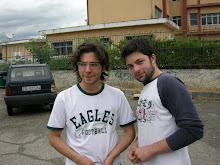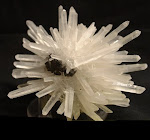
Flash From Star V838 Monocerotis Echoes Through Space
One of the largest Hubble Space Telescope images ever made of a complete galaxy is being unveiled today at the American Astronomical Society meeting in San Diego, Calif.
The Hubble telescope captured a display of starlight, glowing gas, and silhouetted dark clouds of interstellar dust in this 4-foot-by-8-foot image of the barred spiral galaxy NGC 1300. NGC 1300 is considered to be prototypical of barred spiral galaxies. Barred spirals differ from normal spiral galaxies in that the arms of the galaxy do not spiral all the way into the center, but are connected to the two ends of a straight bar of stars containing the nucleus at its center.
At Hubble's resolution, a myriad of fine details, some of which have never before been seen, is seen throughout the galaxy's arms, disk, bulge, and nucleus. Blue and red supergiant stars, star clusters, and star-forming regions are well resolved across the spiral arms, and dust lanes trace out fine structures in the disk and bar. Numerous more distant galaxies are visible in the background, and are seen even through the densest regions of NGC 1300.
In the core of the larger spiral structure of NGC 1300, the nucleus shows its own extraordinary and distinct "grand-design" spiral structure that is about 3,300 light-years (1 kiloparsec) long. Only galaxies with large-scale bars appear to have these grand-design inner disks — a spiral within a spiral. Models suggest that the gas in a bar can be funneled inwards, and then spiral into the center through the grand-design disk, where it can potentially fuel a central black hole. NGC 1300 is not known to have an active nucleus, however, indicating either that there is no black hole, or that it is not accreting matter.
The image was constructed from exposures taken in September 2004 by the Advanced Camera for Surveys onboard Hubble in four filters. Starlight and dust are seen in blue, visible, and infrared light. Bright star clusters are highlighted in red by their associated emission from glowing hydrogen gas. Due to the galaxy's large size, two adjacent pointings of the telescope were necessary to cover the extent of the spiral arms. The galaxy lies roughly 69 million light-years away (21 megaparsecs) in the direction of the constellation Eridanus.
This image shows a time sequence of Hubble Space Telescope images of the light echo around V838 Mon, taken between May 2002 and October 2004. All six pictures were taken with Hubble's Advanced Camera for Surveys using filters sensitive to blue, visible, and infrared wavelengths. The apparent expansion of the light echo, as light from the early 2002 outburst of V838 Mon propagates outward into the surrounding dust, is clearly shown.
All of the images are shown at the same scale. Moreover, the images are also shown as they would appear for the same exposure times throughout the sequence. Thus the background stars appear constant in brightness, while the surface brightness of the light echo steadily declines. The fading of the light echo is primarily due to the light-scattering properties of interstellar dust. Consider a street lamp on a foggy night. The halo around the lamp is brightest right next to the lamp, while out to the side it is much fainter. Similarly, in the first V838 Mon image, taken in May 2002, the light echo was very bright and compact. At later times, we are seeing dust out to the side of the star, rather than dust that is immediately in front of the star, so the amount of light scattered in our direction is smaller. Hubble astronomers expect the light echo to continue to change its appearance and brightness over the next several years.
For more information, please contact: Keith Noll, Hubble Heritage Team, Space Telescope Science Institute, 3700 San Martin Drive, Baltimore, MD 21218, (phone) 410-338-1828, (fax) 410-338-4579, (e-mail) noll@stsci.edu or
Pat Knezek, WIYN Consortium, Inc., 950 N. Cherry Avenue, Tucson, AZ, (phone) 520-318-8442, (fax) 520-318-8360, (e-mail) knezek@noao.edu .
Object Name: NGC 1300
Image Type: Astronomical
Credit: NASA, ESA, and The Hubble Heritage Team (STScI/AURA)
Acknowledgment: P. Knezek (WIYN)
































Nessun commento:
Posta un commento